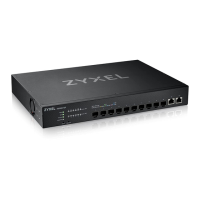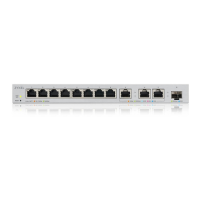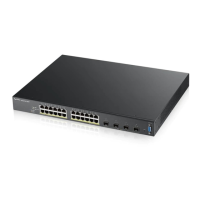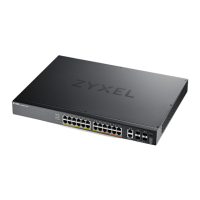Chapter 31 Auto PD Recovery
XMG1930 Series User’s Guide
215
To open this screen, click PORT > Auto PD Recovery.
Figure 140 PORT > Auto PD Recovery
The following table describes the labels in this screen.
Table 98 PORT > Auto PD Recovery
LABEL DESCRIPTION
Active Select this option to enable Auto PD Recovery on the Switch.
Port This field displays the index number of a port on the Switch.
* Settings in this row apply to all ports.
Use this row only if you want to make some settings the same for all ports. Use this row first to
set the common settings and then make adjustments on a port-by-port basis.
Changes in this row are copied to all the ports as soon as you make them.
Active Select Active to enable Auto PD Recovery on the ports.
Mode Select LLDP to have the Switch passively monitor current status of the connected PD by
reading LLDP packets from the PD on the port. The Switch also sends out LLDP packets to the
PD to update the Switch Neighbor table on the PD.
Select Ping to have the Switch ping the IP address of the connected PD to test whether the
PD is reachable or not.
Neighbor Name If Mode is set to LLDP, the system name of the connected PD displays automatically.
Neighbor IP If Mode is set to Ping and the PD supports LLDP, the connected PD’s IPv4 or IPv6 address to
which the Switch sends ping requests will display automatically. If not, enter the IP address
manually.
Polling Interval
(sec)
Specify the number of seconds the Switch waits for a response before sending another ping
request.
For example, the Switch will try to detect the PD status by performing ping requests every 20
seconds.

